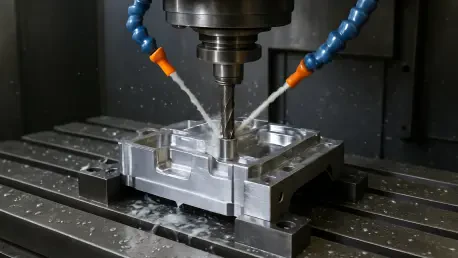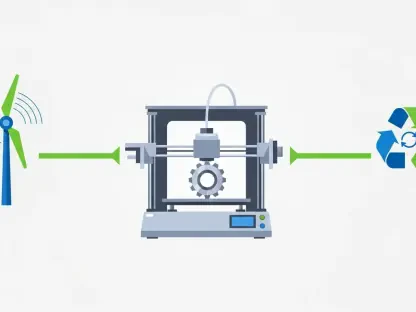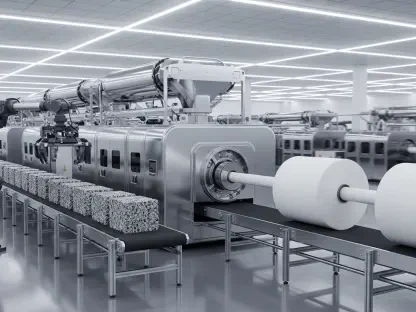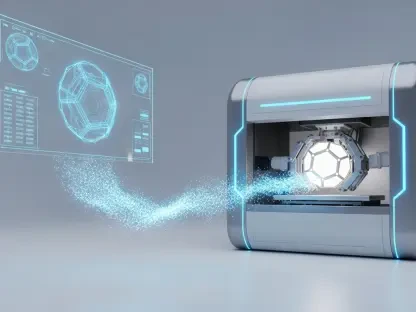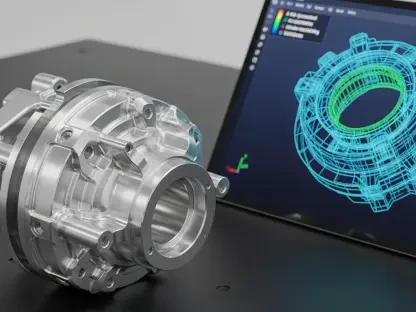In an era where medical advancements are pivotal to improving global health outcomes, CNC (Computer Numerical Control) machining emerges as a transformative force in the healthcare industry, enabling the creation of high-precision components for life-saving devices. This sophisticated manufacturing technology employs computer-guided tools to shape materials with exceptional accuracy, making it indispensable for producing intricate parts used in surgical instruments, implants, and diagnostic equipment. As the demand for innovative and reliable healthcare solutions continues to surge, CNC machining stands as a cornerstone, addressing critical needs for biocompatibility and precision in medical applications. The impact of this technology extends beyond mere production, directly enhancing patient care by ensuring that every component meets the exacting standards required in clinical settings. By bridging the gap between engineering excellence and medical necessity, CNC machining is redefining how healthcare providers tackle complex challenges, from chronic diseases to personalized treatments, ultimately paving the way for better health outcomes across diverse populations.
The Precision Powerhouse: CNC Machining in Medical Device Production
Crafting Life-Saving Components
The unparalleled precision of CNC machining has become a game-changer in the production of critical medical components, fundamentally altering the landscape of healthcare delivery. Surgical tools, orthopedic implants, and diagnostic devices often require intricate designs that must fit perfectly within the human body or function flawlessly during high-stakes procedures. CNC technology ensures that these components are crafted with microscopic accuracy, minimizing the risk of errors that could compromise patient safety. For example, a misaligned implant could lead to prolonged recovery or even surgical failure, but CNC machining eliminates such concerns by adhering to exact specifications. This precision directly correlates with improved outcomes, as patients benefit from devices that integrate seamlessly into their treatment plans, whether it’s a hip replacement or a delicate neurosurgical tool.
Moreover, the reliability of CNC-machined parts instills confidence in healthcare professionals who depend on these tools daily. Unlike traditional manufacturing methods that may struggle with consistency, CNC systems deliver uniformity across every piece, ensuring that each scalpel blade or pacemaker component performs as expected. This consistency is particularly vital in emergency situations where there is no margin for error. By enabling the creation of dependable medical devices, CNC machining not only supports individual patient care but also bolsters the broader healthcare system’s ability to respond to urgent needs, highlighting its indispensable role in modern medicine.
Meeting Regulatory Standards
Compliance with stringent regulatory standards is a non-negotiable aspect of medical manufacturing, and CNC machining excels in meeting these rigorous demands, particularly when working with medical-grade plastics. These materials, essential for many devices due to their biocompatibility, must undergo precise shaping to avoid any risk of adverse reactions when implanted or used within the body. CNC technology ensures that every cut and contour adheres to the strict guidelines set by health authorities, guaranteeing that components are safe for patient use. This capability is critical for items like prosthetic limbs or dental implants, where even minor deviations could lead to complications.
Additionally, the ability of CNC machining to maintain high standards across large production runs offers manufacturers a reliable way to navigate the complex landscape of healthcare regulations. Consistency in output means that every batch of components can be trusted to meet the same safety criteria, reducing the likelihood of costly recalls or legal challenges. This reliability builds trust among medical device companies and end users, ensuring that products ranging from insulin pumps to heart valves uphold the highest levels of quality. As regulatory scrutiny continues to intensify, CNC machining provides a robust solution to keep pace with evolving standards, safeguarding both patient well-being and industry credibility.
Scalability and Customization in Healthcare
Mass Production Without Compromise
As global healthcare needs expand with an aging population and rising chronic conditions, the scalability offered by CNC machining becomes a vital asset in meeting soaring demand for medical devices. This technology enables manufacturers to produce large quantities of essential items like pacemakers, ventilators, and diagnostic tools without sacrificing quality. The automated nature of CNC systems ensures that each unit matches the precision of the last, even during high-volume production runs. This capacity is crucial in addressing widespread health challenges, such as cardiovascular diseases, where millions of patients rely on consistent access to life-sustaining equipment.
Furthermore, the efficiency of CNC machining in mass production helps mitigate supply chain disruptions that often plague the healthcare sector. By streamlining manufacturing processes, it reduces lead times and ensures that hospitals and clinics remain stocked with necessary devices, even during peak demand periods like pandemics. This reliability not only supports healthcare providers in delivering timely care but also stabilizes markets by preventing shortages that could drive up costs. The ability to scale production while maintaining exacting standards underscores how CNC machining serves as a backbone for global health infrastructure, ensuring accessibility to critical medical solutions.
Personalized Medical Solutions
Beyond mass production, CNC machining shines in its ability to deliver customized medical solutions tailored to individual patient needs, aligning with the growing trend of personalized medicine. Whether crafting a unique orthopedic implant for a specific bone structure or designing a specialized surgical instrument for a rare procedure, CNC technology offers the flexibility to produce one-off designs with the same precision as standardized products. This adaptability is invaluable in cases where standard devices may not suffice, allowing for treatments that are as unique as the patients themselves.
The impact of such customization extends to improving patient outcomes through better-fitting devices and tools. For instance, a tailor-made prosthetic can enhance mobility and comfort, while a bespoke surgical guide can increase the accuracy of complex operations. CNC machining achieves this by leveraging digital designs that can be adjusted on demand, ensuring rapid turnaround times for custom orders. This responsiveness empowers healthcare providers to address niche medical challenges effectively, fostering a more inclusive approach to care where individual differences are not just acknowledged but actively accommodated, thereby elevating the standard of treatment across diverse medical scenarios.
Cost Efficiency and Technological Integration
Balancing Budgets in Healthcare
One of the standout benefits of CNC machining in healthcare lies in its potential to deliver cost efficiency, a pressing concern for systems often constrained by tight budgets. While the initial investment in CNC equipment and setup may be substantial, the long-term savings are significant due to reduced material waste, faster production cycles, and minimized errors during manufacturing. These efficiencies translate into lower costs per unit for medical devices, making essential tools and implants more accessible to hospitals and clinics that must balance quality care with financial limitations.
Additionally, the precision of CNC machining reduces the need for costly rework or replacements caused by defective parts. By producing components correctly the first time, manufacturers can avoid the expenses associated with recalls or patient complications arising from substandard equipment. This cost-effectiveness benefits not only the producers but also the broader healthcare ecosystem, as savings can be redirected toward research, staff training, or expanding patient services. In an environment where every dollar counts, CNC machining offers a practical solution to maintain high standards without breaking the bank, ensuring that financial constraints do not hinder access to cutting-edge medical technology.
Innovating with Emerging Tech
The integration of CNC machining with emerging technologies like 3D printing and AI-driven design tools marks a significant leap forward in the development of medical devices. These synergies streamline the entire process from concept to production, allowing engineers to prototype innovative solutions rapidly and test them for efficacy before full-scale manufacturing. For instance, AI can optimize designs for complex implants, while 3D printing can create initial models that CNC systems then refine with precision, drastically cutting down development timelines and accelerating the delivery of new treatments to market.
This technological convergence also fosters innovation by enabling the exploration of novel materials and designs that were previously unfeasible. CNC machining, when paired with advanced software, can adapt to intricate patterns suggested by AI algorithms, pushing the boundaries of what medical devices can achieve. Such advancements mean that breakthroughs in areas like minimally invasive surgery or wearable health monitors reach patients faster, addressing urgent health needs with unprecedented speed. The collaboration between CNC machining and cutting-edge tech not only enhances efficiency but also positions the healthcare industry at the forefront of innovation, ready to tackle future challenges with agility and foresight.
Industry Leaders and Societal Impact
Expertise Driving Transformation
Specialized companies focusing on CNC machining play a pivotal role in driving healthcare transformations by ensuring that medical-grade components meet the highest standards of safety and durability. Their expertise in handling biocompatible materials, particularly medical-grade plastics, guarantees that devices such as catheters or joint replacements are both effective and safe for long-term use. This dedication to quality underpins the trust that healthcare providers place in these manufactured parts, knowing that each piece has been meticulously crafted to support life-critical applications.
Beyond technical proficiency, these industry leaders contribute to advancing medical technology by collaborating with device designers and healthcare professionals to refine manufacturing processes. Their deep understanding of CNC capabilities allows for continuous improvements in how components are produced, often leading to innovations that enhance device functionality. This collaborative approach ensures that the end products not only comply with current standards but also anticipate future needs, positioning the healthcare sector to adapt to evolving challenges. The influence of such specialized expertise extends through the supply chain, reinforcing the reliability of medical solutions that millions depend on daily.
Addressing Chronic Health Challenges
CNC machining also plays a direct role in addressing widespread health challenges, particularly chronic conditions that affect vast populations worldwide, by producing reliable components for specialized devices. For example, parts for venous valves or insulin pumps must withstand constant use while maintaining precision to manage conditions like chronic venous insufficiency or diabetes effectively. CNC technology ensures these components are durable and accurate, providing patients with consistent treatment options that improve their quality of life over extended periods.
The societal value of this contribution cannot be overstated, as it supports millions grappling with long-term health issues by enabling access to dependable medical interventions. By facilitating the production of such critical devices, CNC machining helps reduce the burden on healthcare systems, allowing for better management of chronic diseases without frequent device failures or replacements. This reliability fosters a sense of security among patients and caregivers, knowing that the technology underpinning their care is built to last. Moreover, it highlights how industrial advancements can have profound human impacts, bridging the gap between technical innovation and tangible improvements in public health outcomes.
Future Horizons of CNC in Healthcare
Evolving Materials and Automation
Looking ahead, the role of CNC machining in healthcare is set to expand further with ongoing advancements in materials science and automation, promising even greater precision and efficiency in medical device production. The development of new biocompatible materials offers opportunities to create components that are not only safer but also more adaptable to complex medical needs. CNC systems, equipped to handle these innovative materials, will likely produce next-generation implants and tools that integrate seamlessly with human biology, enhancing treatment effectiveness for a range of conditions.
Automation within CNC machining is another frontier poised to revolutionize the field, reducing human intervention and further minimizing errors in manufacturing processes. Advanced robotic systems and real-time monitoring can optimize production workflows, ensuring faster turnaround times for critical devices while maintaining stringent quality controls. This shift toward greater automation aligns with the healthcare industry’s need for rapid response capabilities, especially in crisis situations where demand spikes. As these technological strides continue, CNC machining will undoubtedly solidify its position as a linchpin in crafting cutting-edge healthcare solutions that anticipate and address future medical challenges.
Pioneering a Healthier Tomorrow
Reflecting on the strides made through CNC machining, it’s evident that past efforts laid a strong foundation for tackling intricate health issues with precision and care. Years of refining this technology have demonstrated its capacity to produce reliable medical components that transformed countless lives by improving surgical outcomes and chronic disease management. The commitment to excellence in manufacturing mirrors a broader dedication to patient well-being, setting a benchmark for what industrial innovation can achieve in clinical contexts.
Moving forward, the focus should shift toward harnessing these advancements to explore uncharted territories in healthcare, such as integrating smart technologies into CNC-produced devices for real-time health monitoring. Collaboration between engineers, medical professionals, and policymakers will be essential to ensure that emerging solutions remain accessible and equitable across diverse communities. By prioritizing research into sustainable materials and automated systems, the industry can build on previous successes to create a future where medical technology not only heals but also prevents, offering proactive care that redefines global health standards.
